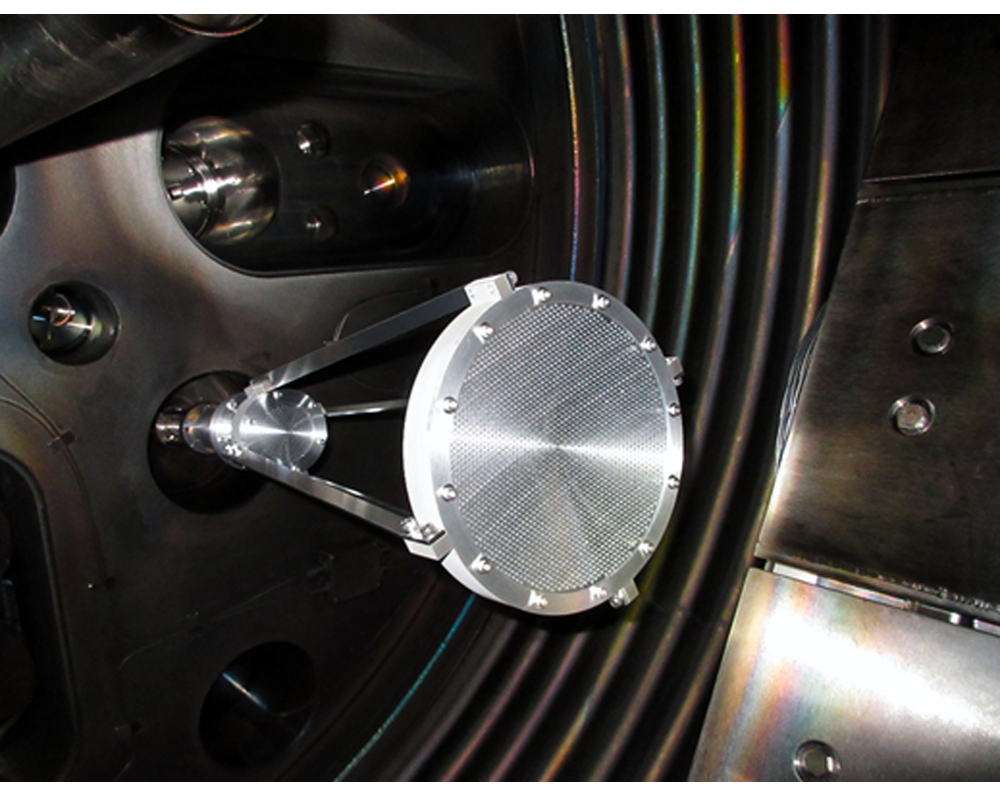Development of new instrument for micro-scale turbulence observation
We have developed a new scattering instrument using millimeter wave to observe micro-scale turbulences of about 1 mm in high-temperature plasmas. Although strong intensity of the micro-scale turbulence is thought to have a significant impact on the confinement of high-temperature plasmas, it has been difficult to directly observe it. In this study, we developed a special metal lens and other equipment for use in large helical devices (LHD) and succeeded in detecting the signal caused by turbulence in plasma.

We have developed an instrument to measure the micro-scale turbulence in high temperature plasmas with high accuracy. In order to measure micro-scale turbulence without disturbing the target plasma, high spatial and temporal resolutions are required simultaneously. In this study, we applied a technique called millimeter-wave backscattering measurement. By this method, short electromagnetic waves called millimeter waves are injected into the plasma, and the scattered waves generated by the turbulence are received. The problem is that the scattered signals are weak, and there are millimeter waves radiated from the plasma itself and strong millimeter wave input from the outside to heat the plasma, so it is necessary to remove the effects of these millimeter waves that are not related to this measurement device. Therefore, we developed a special filter and succeeded in obtaining the scattering signal due to turbulence from inside the plasma.
In high-temperature plasmas, the pressure of heated electrons and ions is not uniform, so a compressing force acts to flatten the pressure and turbulence of various sizes can develop, based on this force. In particular, it is predicted that micro-scale turbulent eddies of about one millimeter in size, in which electrons wrap around magnetic field lines used to confine the plasma, will have a significant impact inside future burning plasmas. Studying the characteristics of this micro-scale turbulence is also important for predicting the confinement performance of future fusion plasmas. However, it has been difficult to make experimental observations of such small micro-scale turbulence because it requires very high-precision instruments.
In order to address this issue, the LHD research group, in collaboration with researchers at the Institute of Applied Mechanics, Kyushu University, Univ of Tokyo, and Fukui University, set up a millimeter-wave transmitting and receiving antenna inside the plasma vacuum vessel to increase the signal strength by measuring close to the plasma, and to achieve high spatial resolution by focusing the beam. Dielectric lenses are used to narrow down the light, but they cannot be used in a vacuum vessel where plasma experiments are conducted. Therefore, we developed a metal lens that can be used in a vacuum vessel. In addition, we designed and fabricated a millimeter-wave circuit that can receive weak scattered signals containing turbulence information separately from the surrounding environmental noise, and succeeded in observing micro-scale turbulence in LHD plasmas for the first time.
In future fusion devices, the main body of the measurement device must be installed far away from the experimental device to make measurements. The millimeter wave used for the measurement this time also succeeded in observing turbulence from 60 meters away from the LHD through a corrugated waveguide, a metal tube with fine folds inside. This is a good example of how this measurement method can be used in future fusion devices. In addition, the ability to observe turbulence on a microscopic scale has enabled us to develop a new research field of studying the interaction between turbulence of different sizes, such as macroscopic and mesoscopic, which has already been observed. The results of this research are expected to open up new physical fields.
This research result was published in Review of Scientific Instruments, a journal of the American Institute of Physics, on April 13, 2021.
